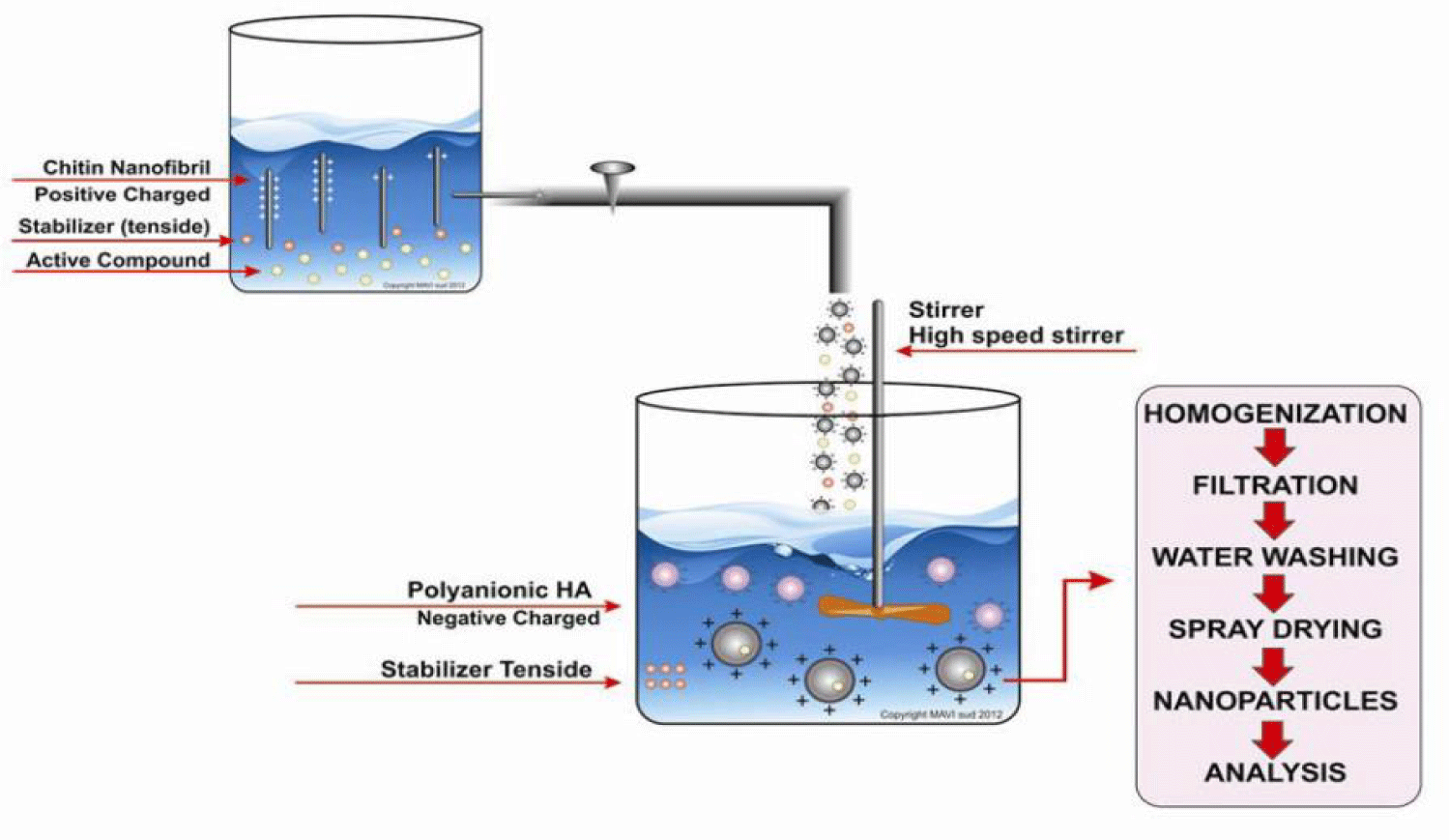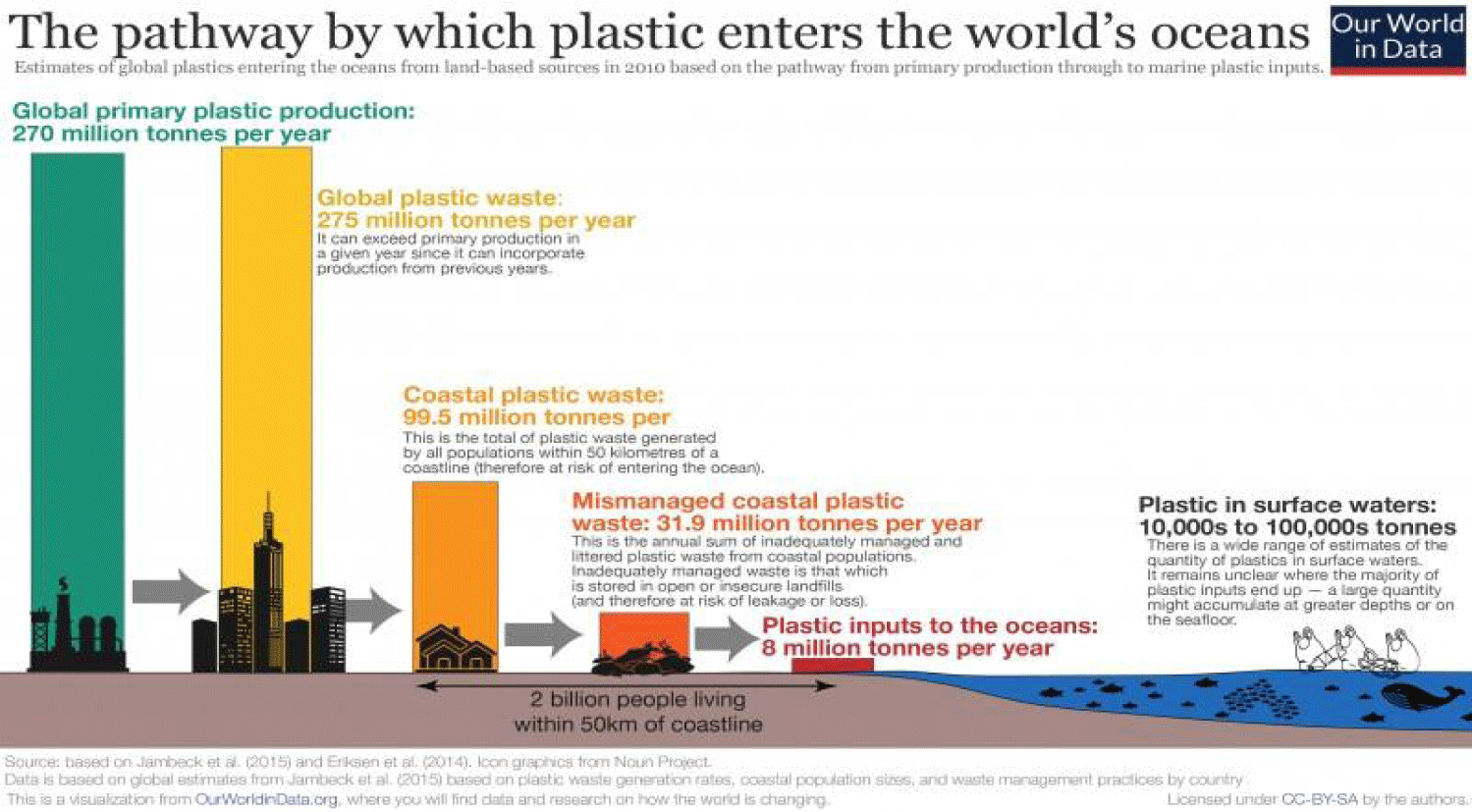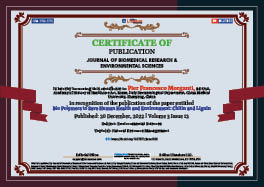Environmental Sciences . 2022 December 20;3(12):1507-1510. doi: 10.37871/jbres1626.
Bio Polymers to Save Human Health and Environment: Chitin and Lignin
PierFrancesco Morganti*
- Circular economy
- Waste
- Pollution
- Environment
- Extra cellular matrix
- Biopolymers
- Electro spinning
- Chitin nanofibrils
- Nanolignin
Abstract
The actual human ecosystems are producing a high quantity of plastic waste that represents a tough problem to be solved. Thus the need of operating and living by the circular green economy using food and agro-forestry by-products, such as nano-sized chitin and lignin, to make innovative biodegradable products and packagings at zero waste. These natural polymers may be used, for example, to make smart tissues which, copying the Extra Cellular Matrix (ECM)' structure, result effective and safe, for medical and cosmetic use, also because packaged into biodegradable containers. This new way to produce and consume will be useful to stop plastic waste and pollution invading land and oceans, safeguarding the natural raw materials and the Earth' biodiversity for the incoming generations.
Introduction
Chitin and lignin are natural biopolymers obtainable from waste material at low cost. They, found in the exoskeleton of crustaceans and insects as well as cell walls of fungi or in waste material of paper production are recovered as by-products of fishery and wood pulp respectively [1]. These interesting biopolymers have been used from our research group as block polymeric micro/nano complexes which, bound to natural fibers of non-woven tissues, have been utilized for producing innovative medical and cosmetic active carriers [2-4]. The micro/nanosize of chitin, lignin and their block polymeric nanoparticles used are necessary to increase the area weight ratio and their effectiveness [5]. Efficiency of encapsulation as well as the morphological structure and relative bio- and eco compatibility of the obtained complexes and tissues, have been verified in advance by in vitro and in vivo technologies [6,7]. The biopolimers, in fact, may be easily complexed each to other because of the different electrical charges covering their surface, respectively positive for chitin and negative for lignin. Moreover the micro/nano particles (NPs), obtained in water solution by the gelation method (Figure 1), have been produced encapsulating various active ingredients, selected according to the activity designed for the final product. Successively the NPs have been bound to non-woven tissue made by the electrospinning technology for realizing smart advanced medications and innovative cosmeceuticals [8,9]. Naturally all the steps for producing particles and tissues have to respect particular conditions of pH, humidity and temperature necessary to optimize the skin homeostasis and the crosstalk between the different cells, such as keratinocytes and fibroblasts [10-12].To regenerate a wounded, burned or rejuvenate an aged skin, in fact, it is necessary to provide a tissue acting as an artificial matrix. Therefore, structure and morphology of the obtained tissues have to mimic the porous scaffold of the natural Extra Cellular Matrix (ECM) (Figure 2). They, in fact, have to be able to facilitate adhesion, growth and proliferation of human keratinocytes and fibroblasts, necessary to enhance the regeneration of the wounded, burned or precociously aged skin [13,14]. Thus these innovative tissues, incorporated with selected bioactive ingredients, opportunely engineered and therefore named cosmeceutical-tissues, seem to be able to rejuvenate an aged skin reducing fine lines and wrinkles, being skin- and environmental-friendly [13,14]. At this purpose it is interesting also to underline the possibility chitin and lignin have to be used for making biodegradable packagings, usually made by plastic material, contributing to create a more green and healthy environment [15,16]. These biopolymers, in fact, are easily degraded by human and environmental microoganisms and are obtained from natural by-products of food and agro-forestry, as previously reported. At this purpose it is to remember that plastic packagings are increasing day by day, invading rivers, lakes and sea of their non-biodegradable waste. Consequently, production of plastic materials increased from around 1.5 million tons in 1950 to 460 million tonnes in 2019, created a 275 million tons of waste per year, the majority of which is invading oceans (Figure 3) [17].
Unfortunately this waste, transformed in plastic' microparticles by microbial enzymes and sun energy, become seafood for birds, mammals and humans together with the toxic ingredients. Thus the so called microplastics, recovered in tea bags, and human blood and placenta, will represent a probable cause of future toxic side effects, not well known and studied until now [18-20]. Moreover the great quantity of waste, stored up for the actual way of producing and consuming, is the main cause of the increased Greenhouse Gas (GHG) emissions with the consequent worldwide climate changing characterized by increase of temperature and disasters [21-23]. Therefore the most of our society is to change the lifestyle, transforming the actual linear economy based on the taking, making and producing waste in circular economy based on redesigning, reducing, reusing and recycling [24,25]. Thus the future human growth has to be sustainable with a more inclusive access to labor-market and healthcare [26]. Therefore we hope that, acceleration of a more organized work and economy through advanced technologies and innovations capable to maintain the Planet' biodiversity, will become a reality [26]. In conclusion the use on natural polymers such as the proposed chitin and lignin seem to go in this direction.
Conflict of Interest: The author declares no conflict of interest.
References
- Morganti P, Morganti G, Yudin VE, Chen HD. Chitin and Lignin: Old Polymers and New Bio-tissue-Carrier. J Dermatology Dermatitis. 2021;6(3). doi: 10.31579/2578-8949/083.
- Morganti P, Febo P, Cardillo M, Donnarumma G, Baroni A. Chitin nanofibril and Nanolignin: Natural polymers of biomedical interest. J Cosmet Dermatol. 2017;1(2). doi: 10.1696/2576-2826.
- Morganti P, Coltelli MB. A new carrier for advanced cosmeceuticals. Cosmetics. 2019;6:10. doi: 10.3390/cosmetics6010010.
- Morganti P, Chen HD, Gao X, Morganti G, Febo D. Chitin & Lignin: Tuning food waste into cosmeceuticals. J Clin Cosmet Dermatol. 2018;3(1). doi:10.16966/2576-2826.135.
- Bennet D and Kim S. Polymer Nanopartcles for Smart Drug Delivery, 2014. In: Sezer AD (Ed) Application in Drug Delivery, Cap 8, IntechOpen. doi: 10.5772/58422
- Coltelli MB, Morganti P, Castelvetro V, Lazzeri A, Danti S, Benjelloun- Mlayah, B et al. Chitin Nanofibril complexes embedding functions molecules: structure, thermal stability, and in vitro skin compatibility to design new bio - based products for skin contact applications. Nanomaterials. 2022;12:1295. doi: 10.3390/nano12081295
- Donnarumma G, Fusco A, Morganti P, Palombo M, Anniboletti T, Del Ciotto P, et al. Advanced medications made by green Nanocomposites. Int J ResNano Sci. 2018;5:261-270.
- Morganti P, Morganti G, Colao C. Biofunctional Textiles for Aging Skin. Biomedicines. 2019 Jul 17;7(3):51. doi: 10.3390/biomedicines7030051. PMID: 31319516; PMCID: PMC6784157.
- Morganti P, Morganti G, Coltelli MB. Chitin nanomaterials and nanocomposites for tissue repair. In: AH Choi and B Ben Nissan (Eds) Marine-derived biomaterials for tissue engineering applications. Singapore a Springer. 2019;523-544.
- Chouhan D, Dey N, Bhardwaj N, Mandal BB. Emerging and innovative approaches for wound healing and skin regeneration: Current status and advances. Biomaterials. 2019 Sep;216:119267. doi: 10.1016/j.biomaterials.2019.119267. Epub 2019 Jun 13. PMID: 31247480.
- Howling GI, Dettmar PW, Goddard PA, Hampson FC, Dornish M, Wood EJ. The effect of chitin and chitosan on the proliferation of human skin fibroblasts and keratinocytes in vitro. Biomaterials. 2001 Nov;22(22):2959-66. doi: 10.1016/s0142-9612(01)00042-4. PMID: 11575470.
- Yang TL. Chitin-based materials in tissue engineering: applications in soft tissue and epithelial organ. Int J Mol Sci. 2011;12(3):1936-63. doi: 10.3390/ijms12031936. Epub 2011 Mar 17. PMID: 21673932; PMCID: PMC3111643.
- Morganti P, Morganti G, Gagliardini A, Lohani A. From Cosmetics to innovative cosmeceuticals non-woven tissues as new biodegradable carriers. Cosmetics. 2021;8:65. doi: 10.3390/cosmetics8930065
- Morganti P, Morganti G, Coltelli MB, Yudin VE, Chen HD, Gagliardini A. Non-woven tissues as novel cosmetic carriers for a green beauty. Adv Environ Eng Res. 2022;3(2). doi: 10.21926/aeer.2202021
- Cinelli P, Coltelli MB, Signori F, Morganti P, Lazzeri A. Cosmetic packaging to save the environment: Future perspectives. Cosmetics. 2019;6:26. doi: 10.3390/cosmetics6020026
- Coltelli MB, Gigante V, Cinelli P, Vannozzi A, Aliotta L, Lazzeri A. Biobased and biodegradable flexible polimeric packaging. In: P. Morganti and MB Coltelli (Eds), 2021 An Introduction to the circular economy, pp365-390. Nova Sciences Publishers Inc, New York, USA.
- Richie H, Rosen M. Plastic Waste. 2018-2022.
- Hernandez LM, Xu EG, Larsson HCE, Tahara R, Maisuria VB, Tufenkji N. Plastic Teabags Release Billions of Microparticles and Nanoparticles into Tea. Environ Sci Technol. 2019 Nov 5;53(21):12300-12310. doi: 10.1021/acs.est.9b02540. Epub 2019 Sep 25. PMID: 31552738.
- Ragusa A, Svelato A, Santacroce C, Catalano P, Notarstefano V, Carnevali O, et al. Plasticenta: First evidence of microplastics in human placenta. Environment Int. 2021;146. doi: 10.1016/j.envint.2020.106274
- L'eslie HA, Van Velzen MJM, Brandsma SH, Vethaak AD, Garcia-Vallejo JJ, Lamoree MH. Discover and quantification of plastic particle pollution in human blood. Env Int. 2022;163:107199. doi: 10.1016/ j.envint.2022.107199
- UN. Earth System Science Data Discussions, Environmental Research Letters and Nature Climate Change. UN's COP25, Climate summit, Madrid, Spain, December 2019.
- UN. Change of climate change imprints. Climate Technology Centre & Network. 2020, United Nations Environment Programme. New York, USA.
- EPA. Overview of greenhouse gases. United States Environmental Protection Agency 2020, Washington DC, USA.
- EMAF. From Linear to Circular Economy; A global learning Programme. Ellen MaArthur Foundation. April 15 2020.
- Morganti P, Coltelli MB (Eds). An Introduction to the Circular Economy 2021. Nova Science Pyblishers, Inc, New York, USA.
- Stemfels B, Francis T, Madgavkar A, Smit S. Our future lives and livelihoods: Sustainable and inclusive and growing 2021. MacKinsey & Company, New York, USA.
Content Alerts
SignUp to our
Content alerts.
 This work is licensed under a Creative Commons Attribution 4.0 International License.
This work is licensed under a Creative Commons Attribution 4.0 International License.











